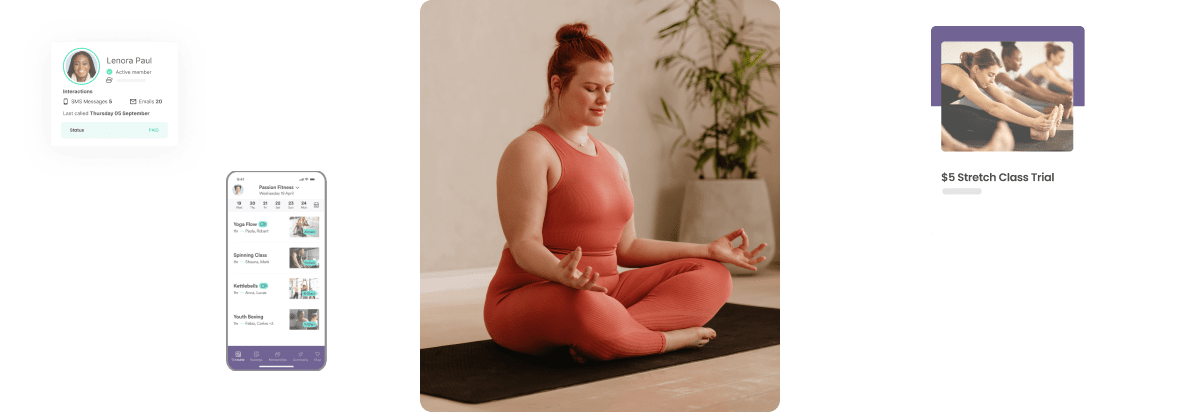The pandemic triggered a digital revolution that promised to reinvent the way that people worked out, with the phrase “anytime, anywhere” a common slogan repeated across fitness business podcasts, conferences and triumphantly penned op-eds. But is the reality a lot different?
A recent article by the Seattle Times shed some light on the reality of members returning to the gym post pandemic. The report, based on research conducted by market research firm Nielsen, ranks different US cities on their percentage of gym memberships among the population by comparing the rates before and after the pandemic.
Some cities like San Diego and New York have experienced a 13+ point drop in gym membership numbers, making it clear not everyone has rushed back to working out in a gym or studio right away. A number of factors could be influencing this, one of which could be the diversity of digital options that now exist that allow the consumer to workout and hit their goals outside the four walls of their local studio.
On the other hand, big players in the digital space such as Peloton, who experienced huge growth during Covid as people turned their living rooms into temporary fitness studios, are now facing a slow down and have had to make massive cuts to survive.
Why this topic is important: There are key questions to be asked about the fitness industry right now. Was digital only just a fad driven by necessity? Or have gyms and studios lost a share of the market they are never getting back? These are some of the questions we want to answer in this article to give you a clearer picture as a fitness business owner about where the fitness industry is heading.
What you’re going to learn: We are going to give an overview of where things stand in terms of brick and mortar studio and digital only fitness companies, and will take a look at how you as a fitness business owner need to offer to be attractive to the modern fitness consumer.
Here’s what’s coming up:
- Fitness studio owners fall into two camps
- The state of play with digital and online fitness
- The state of play with fitness studios
- What you need to do as a fitness studio owner
Fitness studio owners fall into two camps
Health Club Management magazine interviewed a range of industry leaders from the fitness industry from organizations and companies such as Les Mills, IHRSA and Europe Active and Deloitte. Each presented some key insights on how the fitness industry has changed over the last number of years and where they now think it’s going in the future.
In particular, the head of Europe Active, Dave Stalker, made an interesting point about where fitness business owners stand after events of the last two years and how they should be thinking about the future. According to him, fitness business owners fall largely into two main camps:
- Fitness business owners who mourn the loss of the normality and way things were before the pandemic.
- And fitness business owners who recognize that things have fundamentally changed and are ready to embrace that change and enthusiastically evolve with the times.
It’s this second camp that will ultimately succeed in this new world. He goes on to say that fitness operators need to move away from just selling memberships to people and focus on becoming all round health providers as health has become so important in the wake of the pandemic
And the reality is that’s he’s right – as an industry we need to evolve with the times and be ready to embrace new technologies and new ways of providing the best service we can for our members.
The state of play with digital and online fitness
There is no doubt that digital and online fitness has grown immensely over the past two to three years, and that growth was never more evident in 2020 and 2021. In ACSM’s survey of worldwide fitness trends for 2021, online training was #1 for the first time ever, overtaking wearable technology, which was #1 for 2020.
And while it’s not at the top of the pile for 2022, online and on-demand class come in at #9 and home exercise gyms place at #2. These trends show that despite gyms and studios opening back up, there is still an appetite among fitness consumers for at-home and online fitness solutions.
However, there is a concerning slowdown in the rate of growth of some digital fitness companies, who promised massive growth and a pathway to the future of the fitness industry. One of the best examples is Peloton, a company that sells exercise bikes linked up to live and on demand class.
In August 2022, Peloton reported its sixth consecutive quarterly loss in, with the company posting a net loss of $1.2 billion. This fall from founder John Foley’s vision of building the “biggest consumer product brands in the world” has been quite drastic. While pandemic accelerated their growth, a series of missteps and betting on the demand during lockdown lasting forever led to his dismal. New CEO Barry McCarthy now has to steady the ship for a company and a product that promised so much.
The Customer
Engagement Playbook
for Your Fitness
Business
Discover more In response to the bleak outlook for Peloton and digital fitness, this CNBC article quotes an analyst from the Jefferies Group, Randy Konik, who believes that “gyms are back in a big way”.
But are they?
Let’s take a closer look at this in the next part of this article.
The state of play with fitness studios
While the Nielsen report we covered in the opening part of this article shows there’s been a slowdown in certain major cities across the US, overall the picture looks a bit different. According to this round-up from Fitt Insider on how different parts of the industry are doing, US gym and fitness studio traffic is up this year from 2019.
Despite the initial fears that brick and mortar studios would be damaged irreversibly by online fitness, the reality is that people missed the in-studio experience. At the same time though, fitness consumers enjoyed the flexibility of online workouts. This split in favorability between in-studio and at-home workouts was reflected in the Les Mills Global Report for 2021.
The report (which asked 12,157 fitness consumers) found that there was a 60:40 split in favor of the in-studio experience from the people they asked. While there is a clear margin of victory for studios, there is still a sizable desire for online fitness and at-home workouts, with 80% of gym members planning to continue using digital options in 2022 and beyond.
But how are fitness studios in general doing, now they’ve largely been allowed to operate normally for the last few months?
In the same article by Fitt Insider, we see that some big fitness brands have recovered way better than expected, showing the desire of the general population to want to come back to an in-studio experience. Big brands like Xponential. Planet Fitness and Life Fitness have surged back successfully in terms of membership numbers and are projecting positive growth over the coming quarters.
So what does this all mean for you as a studio owner?
What you need to do as a fitness studio owner
As we can see from the Les Mills report, there is a clear desire from fitness consumers to return to the studio and overall across the US this has been the case when we look at the membership numbers. At the same time though, we need to recognize that certain aspects of the fitness industry have changed due to the flexibility of online fitness.
In truth, not a lot has changed from our advice to fitness business owners back in 2020 in our highly shared article on how to run a successful hybrid fitness studio. In this article we spoke about how studios should be flexible about how they construct their offering and be aware of their members’ needs in terms of working out remotely when they can’t enter the gym.
Here are a few important points to cover when thinking about what you should offer now:
- You still should be anytime, anywhere – to a degree: It’s clear from the research that people want to come back to gyms and studios and have been since restrictions relaxed. However, because people still prefer the flexibility of working out at home, you should at a minimum have an on demand option for your members. This could be reusing live streamed classes filmed during lockdown.
- Build a more complete offering: Don’t fall back into the trap of just offering a workout. Members expect way more than that. Offer a guided nutrition plan, workout tracking, clear goals, on-demand workouts and things like injury prevention advice. Be an all-round health and fitness offering rather than just a workout studio – this will also allow you to layer on extra revenue streams.
- Futureproof your business: The pandemic, and what came after, showed a real need for business to be able to pivot very quickly. With economic uncertainty up ahead you need to be able to pivot quickly to deal with things like rising costs of rent and insurance. Construct a solid offering that you can deliver anywhere in studio or online to deal with any unforeseen incidents down the road.
In summary
Online and at-home fitness made a significant splash in the market in 2020 and 2021 while brick and mortar studios were shut, prompting fears for the survival of the in-studio experience. In truth, consumers have largely rushed back to gyms and studios now they are open. However they desire to remain flexible in how they work out, meaning you need to provide flexibility in your workout options.
Here’s an overview of what we covered today:
- Where fitness studio owners stand today
- The state of play with online fitness
- The state of play with fitness studios
- What you need to do as a fitness operator
What’s next?
- For more information on how to engage your customers, download our expert driven customer engagement playbook directly below.
- Speak to a member of our team if you’d like to know more about how Glofox can drive your retention and member engagement – simply click on the Demo & Pricing button at the top of this page.
The Customer
Engagement Playbook
for Your Fitness
Business
connects with its customers on a deeper level than a
simple business and consumer relationship.












